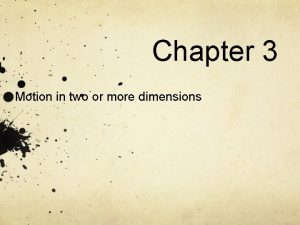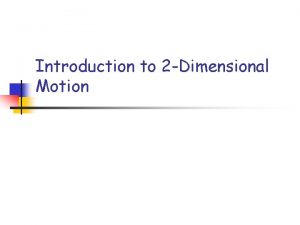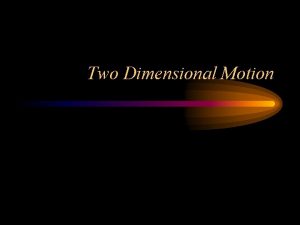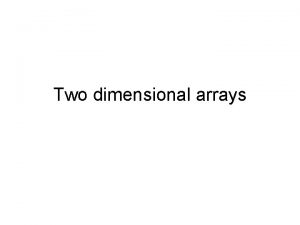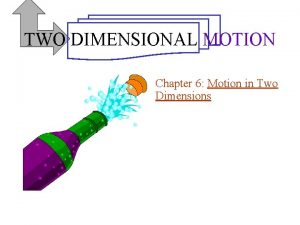Two Dimensional Motion we will now analyze motion




![2. John rides his skateboard 3. 0 km [W], then heads 5. 0 km 2. John rides his skateboard 3. 0 km [W], then heads 5. 0 km](https://slidetodoc.com/presentation_image_h2/13de34c0ad8dad5c9c9ff67e78bf208e/image-5.jpg)
- Slides: 5

Two Dimensional Motion • we will now analyze motion in the horizontal plane which (like all planes) is two dimensional • we will first use vector diagrams to answer questions and follow that up with answering questions mathematically

Vector Quantity • any quantity that is described by a number, a unit, and a direction • common vector quantities are displacement, velocity, acceleration, and force Quick review of vector diagrams: 1. select a scale (relationship between vector and quantity) and directional compass. 2. draw a reference origin. 3. draw a line segment of appropriate length and direction 4. draw the arrowhead at the tip 5. label the vector N 1 cm = 100 m 1. 3 Prac. #1

Adding Vectors • draw vectors to scale in the appropriate direction, connecting them tip to tail. • draw the resultant vector from the tail of the first vector, to the tip of the second vector • measure the length of the resultant vector and use the scale to determine the magnitude of the vector • use a protractor to determine the direction of the vector • label the vector ALWAYS ADD THE NEXT VECTOR WHERE THE PREVIOUS VECTOR FINISHED

Resultant Displacement • displacement is the change in position of an object • resultant displacement ( d. R) is the vector sum of the individual displacements ( d 1 + d 2 + d 3 + …) 1. Andrew rides his bike 3. 0 km [W] and then heads goes 7. 0 km [S]. Calculate his resultant displacement. N 1 cm = 1 km
![2 John rides his skateboard 3 0 km W then heads 5 0 km 2. John rides his skateboard 3. 0 km [W], then heads 5. 0 km](https://slidetodoc.com/presentation_image_h2/13de34c0ad8dad5c9c9ff67e78bf208e/image-5.jpg)
2. John rides his skateboard 3. 0 km [W], then heads 5. 0 km [S] and finally turns 6. 0 km [E]. Calculate his resultant displacement. N 1 cm = 1 km 1. 3 Prac. #2, 3


